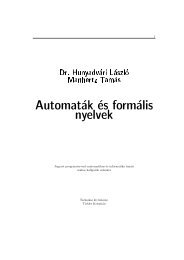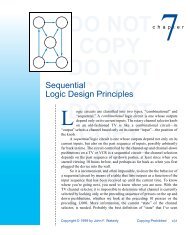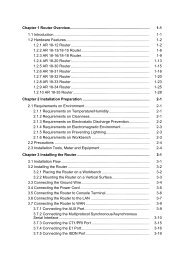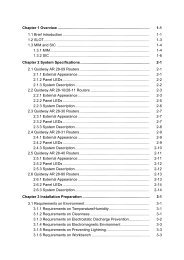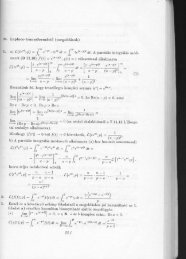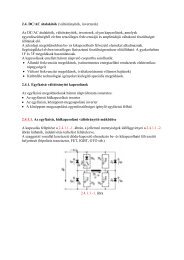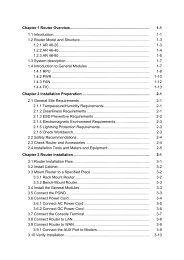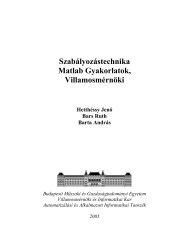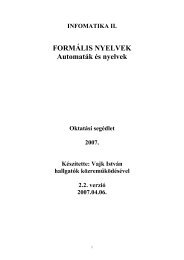chapter 8.pdf
chapter 8.pdf
chapter 8.pdf
You also want an ePaper? Increase the reach of your titles
YUMPU automatically turns print PDFs into web optimized ePapers that Google loves.
Section 8.4 Counters 595NOT COPYHOW MUCH Once you understand the capabilities of different PLDs, you might ask, “Why notDOES IT COST? just always use the most capable PLD available?” For example, even if a circuit fitsin a 20-pin 16V8, why not specify the slightly larger, 24-pin 20V8 so that spareDOinputsNOTare available in case of trouble? And,COPYonce you’ve specified a 20V8, why notuse the somewhat more capable 22V10 which comes in the same 24-pin package?In the real world of product design and engineering, the constraint is cost.Otherwise, the argument of the previous paragraph could be extended ad nauseum,using CPLDs and FPGAs with even more capability (see \chapref{CPLDsFPGAs}).DO NOTLike automobiles and fine wines,COPYdigital devices such as PLDs, CPLDs, andFPGAs are not always priced proportionally to their capabilities and benefits. Inparticular, the closer a device’s capability is to the “bleeding edge,” the higher thepremium you can expect to pay. Thus, when selecting a devices to realize a design,you must evaluate many trade-offs. For example, a high-density, high-cost CPLD orFPGA may allow a design to be realized in a single device whose internal functionsDO NOT COPYare easily changed if need be. On the other hand, using two or more lower densityPLDs, CPLDs, or FPGAs may save component cost but increase board area andpower consumption, while making it harder to change the design later (since thedevice interconnections must be fixed when the board is fabricated).What this goes to show is that overall cost must always be considered alongDO NOT COPYwith design elegance and convenience to create a successful (i.e., profitable)product. And minimizing the cost of a product usually involves a plethora of common-senseeconomic and engineering considerations that are far removed from theturn-the-crank, algorithmic gate minimization methods of Chapter 4.DO NOT COPY8.4 CountersThe name counter is generally used for any clocked sequential circuit whose counterstateDOdiagram contains a singleNOTcycle, as in Figure 8-26. TheCOPYmodulus of a moduluscounter is the number of states in the cycle. A counter with m states is called amodulo-m counter or, sometimes, a divide-by-m counter. A counter with a nonpower-of-2modulus has extra states that are not used in normal operation. divide-by-m countermodulo-m counterDO NOT COPYFigure 8-26S2S1General structureS3 of a counter’s statediagram—a singlecycle.DO NOT COPYSmS4S5Copyright © 1999 by John F. WakerlyCopying Prohibited



